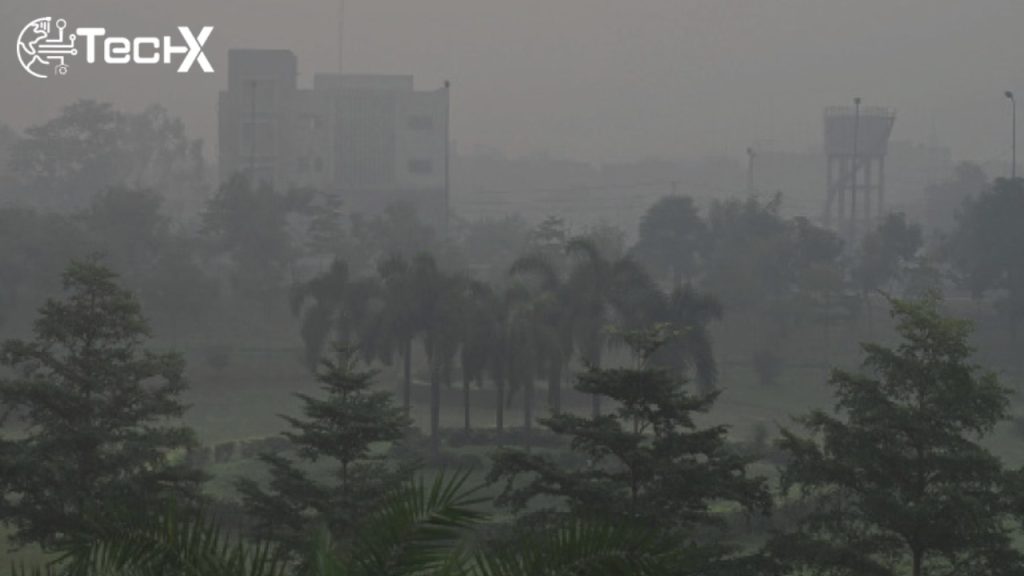The Punjab government has taken stronger steps this year compared to previous years to fight smog in Lahore. An Environmental Protection Force has been set up, along with a modern system for monitoring and forecasting air quality. While these efforts show intent, experts argue that the impact has not been noticeable, and residents continue to suffer under heavy layers of smog.
Alarming Trends in 2024
Lahore’s average Air Quality Index (AQI) in 2024 stood at 126, but the situation often worsened in the winter months. In January, AQI levels reached 202, followed by 142 in February. The months of March to May were slightly better, with readings around 101 to 104. A clear decline was seen in June and July, yet pollution levels climbed again towards the end of the year.
Pollution Peaks Toward Year-End
Data reveals that after some relief in the summer months of 2024, Lahore faced another wave of worsening air quality. AQI values shot up to 143 in September, 163 in October, and 184 in November. December ended with AQI reaching 178. These levels placed Lahore among the most polluted cities in the world, with people forced to wear masks and stay indoors.
Trends in 2025 Raise Concerns
The first nine months of 2025 did not show much improvement either. January recorded an AQI of 178, while February was slightly better at 142. March and April again crossed 116 and 130. The summer months gave small relief, with June and July recording 88 and 86, and August at 79. Still, experts warned that these figures showed worrying long-term patterns.
Also Read: Punjab on Flood Alert as PDMA Warns of Heavy Rains
Comparing Two Years of Data
A closer look at the data shows mixed results between 2024 and 2025. While January and February of 2025 were slightly better than the same months in 2024, the period between March and August showed worse pollution levels than the year before. Only in September 2025 did Lahore experience improvement, with an AQI of 84 compared to 143 in September 2024.
Experts Highlight Short-Term Measures
Environmental experts believe that while the government’s steps are in the right direction, they remain short-term. Aleem Butt, an environmental expert, highlighted that no large-scale plans have been made for electric transport or renewable energy in industries. He added that temporary measures like spraying water cannons can help briefly, but cannot change the bigger picture without long-term reforms.
Need for Green Infrastructure
Butt also stressed that without a major shift towards sustainable infrastructure, Lahore’s smog crisis will persist. Policies promoting electric vehicles, incentives for industries to adopt clean energy, and strict environmental checks are needed. According to him, meaningful results from such policies will take five to six years. Without these, Lahore’s residents will remain trapped in an endless cycle of winter smog.
Lessons from Global Examples
Dr. Imran Hamid, Director General of the Punjab Environmental Protection Department, pointed out that no country can fix air pollution instantly. He referred to China’s example, where billions were invested over ten years to achieve cleaner skies. Pakistan, he argued, cannot solve this issue alone, and regional cooperation with neighboring South Asian countries is essential for lasting success.
The Role of Climate Change
Experts also caution that climatic factors play a big role in worsening smog. During last year’s smog, AQI touched 1,500 in Lahore due to extreme weather effects. With climate change worsening across the globe, Pakistan must factor these influences into its strategies. Without climate-sensitive policies, even strong local actions will not be enough to overcome this environmental challenge.
Forecasting System Offers Hope
For the first time in Pakistan, an Air Quality Forecasting System has been launched. This system allows the prediction of air quality seven days in advance, enabling authorities to take timely measures during the smog season. With checkpoints and early interventions planned, it offers a small ray of hope. However, experts stress that long-term solutions remain the only true path to cleaner skies.
